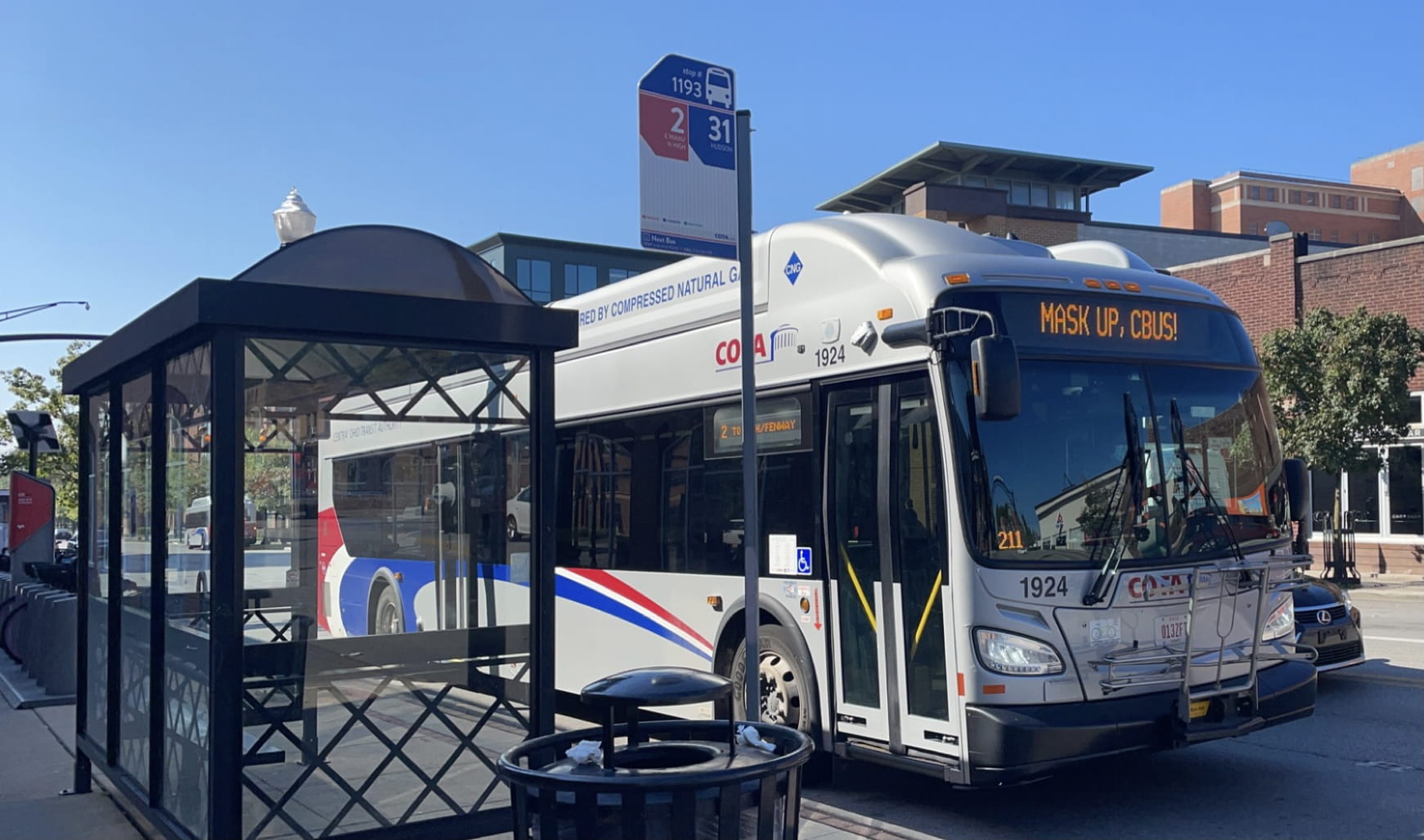
A new COTA route may be added to Ohio State’s West Campus along with two additional transit projects that will be funded with the pending federal funding from the stimulus package. Credit: Lauren Van Niel | Lantern Reporter
A new COTA route may come to Ohio State’s West Campus, pending federal funding from the stimulus package.
In addition to the new bus route, two additional bus rapid transit projects will be funded with the money, Patrick Harris, assistant vice president of external relations for COTA, said. The new route would include direct access to the Innovation District on West Campus.
“The IIJA (Infrastructure Investment and Jobs Act) included the reauthorization of surface transportation spending, so it’s important for us to draw those federal dollars,” Harris said. “We look forward to putting these dollars to work for the community and the central Ohio region.”
According to LinkUS Columbus — the partnership between COTA, the city of Columbus, Franklin County, the Mid-Ohio Regional Planning Commission, Ohio State and the private sector — the new route would connect parts of campus to destinations such as Grandview Yard, the Arena District, downtown Columbus and Riverside Methodist Hospital.
“It’s a major jobs corridor,” Harris said. “This line will connect parts of campus further away from High Street with downtown.”
In a June 1, 2020, statement announcing the initiative’s creation, Columbus City Council President Shannon Hardin said the effort is a matter of racial and economic justice.
“We know that COTA ridership is disproportionately African-American and working class and creating a transit system that better serves our residents is a matter of racial and economic justice,” Hardin said. “LinkUS is how we’re going to bring new high-quality transit to the City of Columbus.”
Harris said a similar bus route is under discussion on West Broad and East Main streets after a bus-only lane was tested in downtown Columbus in 2019.
According to LinkUS Columbus’ Framework Strategy, two forms of transportation were considered for the effort — bus rapid transit and light rail. Bus rapid transit, which includes higher-capacity buses with Wi-Fi, as well as more frequent stops, was chosen because it was less expensive.
The strategy stated that light rail would have cost upwards of $120 million, while a bus rapid transit line would cost a maximum of $35 million — making bus rapid transit nearly four times cheaper.
According to the U.S. Department of Transportation, light rail consists of a streetcar-type vehicle that can be operated on city streets. It travels over two-rail tracks and is powered by overhead lines.
According to its website, COTA currently runs one bus rapid transit line — with Wi-Fi-equipped buses, higher-capacity vehicles and more frequent stops — along Cleveland Avenue on Columbus’ Northeast Side, between downtown and Westerville. According to COTA’s 2018 annual report, service on that route began Jan. 1, 2018. Columbus City Council approved under $5 million in funding for the project in June.
“A million people could move to our region in the coming decades, but our infrastructure, the climate, and residents can’t handle a million more cars on the roads,” Hardin said in a June 28 statement. “Tonight’s investment in the Northwest Corridor is just one piece of building a full mobility system that provides transportation choices for residents.”


